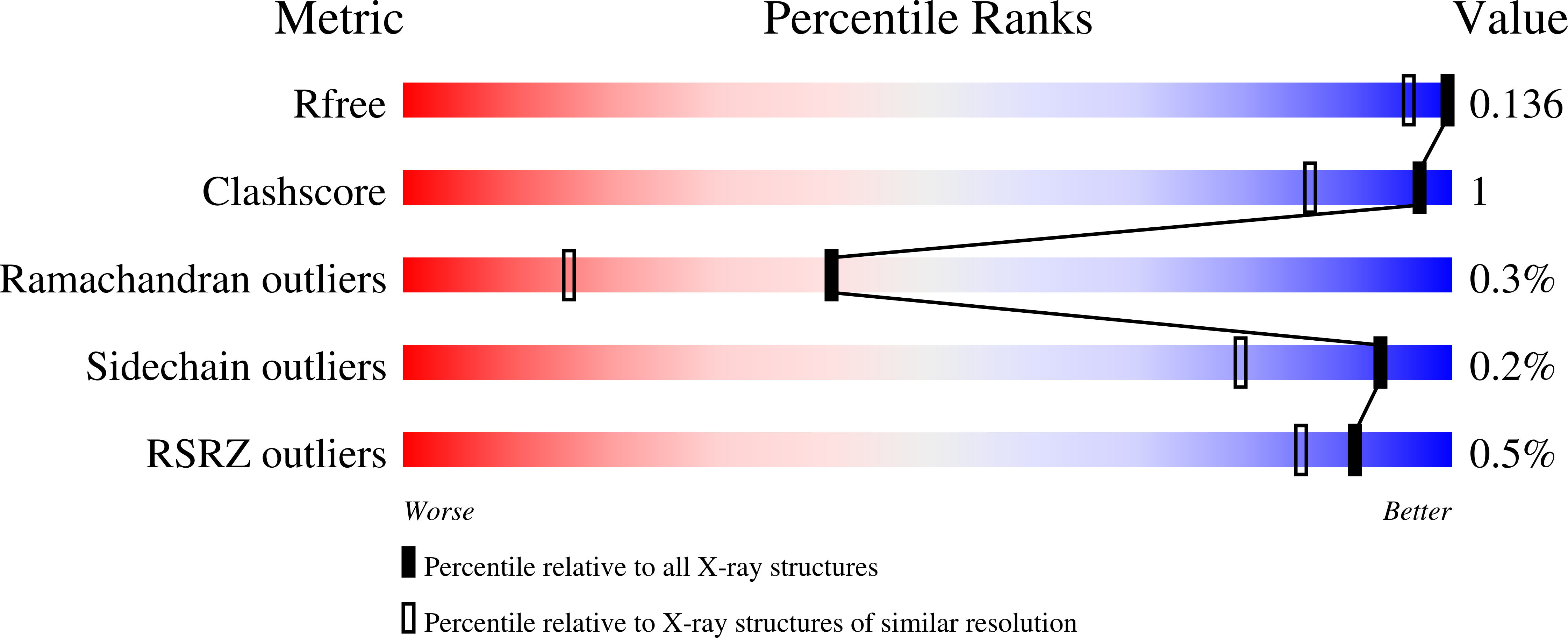Structure of a Talaromyces pinophilus GH62 arabinofuranosidase in complex with AraDNJ at 1.25 angstrom resolution.
Moroz, O.V., Sobala, L.F., Blagova, E., Coyle, T., Peng, W., Morkeberg Krogh, K.B.R., Stubbs, K.A., Wilson, K.S., Davies, G.J.(2018) Acta Crystallogr F Struct Biol Commun 74: 490-495
- PubMed: 30084398
- DOI: https://doi.org/10.1107/S2053230X18000250
- Primary Citation of Related Structures:
6F1J - PubMed Abstract:
The enzymatic hydrolysis of complex plant biomass is a major societal goal of the 21st century in order to deliver renewable energy from nonpetroleum and nonfood sources. One of the major problems in many industrial processes, including the production of second-generation biofuels from lignocellulose, is the presence of `hemicelluloses' such as xylans which block access to the cellulosic biomass. Xylans, with a polymeric β-1,4-xylose backbone, are frequently decorated with acetyl, glucuronyl and arabinofuranosyl `side-chain' substituents, all of which need to be removed for complete degradation of the xylan. As such, there is interest in side-chain-cleaving enzymes and their action on polymeric substrates. Here, the 1.25 Å resolution structure of the Talaromyces pinophilus arabinofuranosidase in complex with the inhibitor AraDNJ, which binds with a K d of 24 ± 0.4 µM, is reported. Positively charged iminosugars are generally considered to be potent inhibitors of retaining glycosidases by virtue of their ability to interact with both acid/base and nucleophilic carboxylates. Here, AraDNJ shows good inhibition of an inverting enzyme, allowing further insight into the structural basis for arabinoxylan recognition and degradation.
Organizational Affiliation:
York Structural Biology Laboratory, Department of Chemistry, The University of York, York YO10 5DD, England.


















